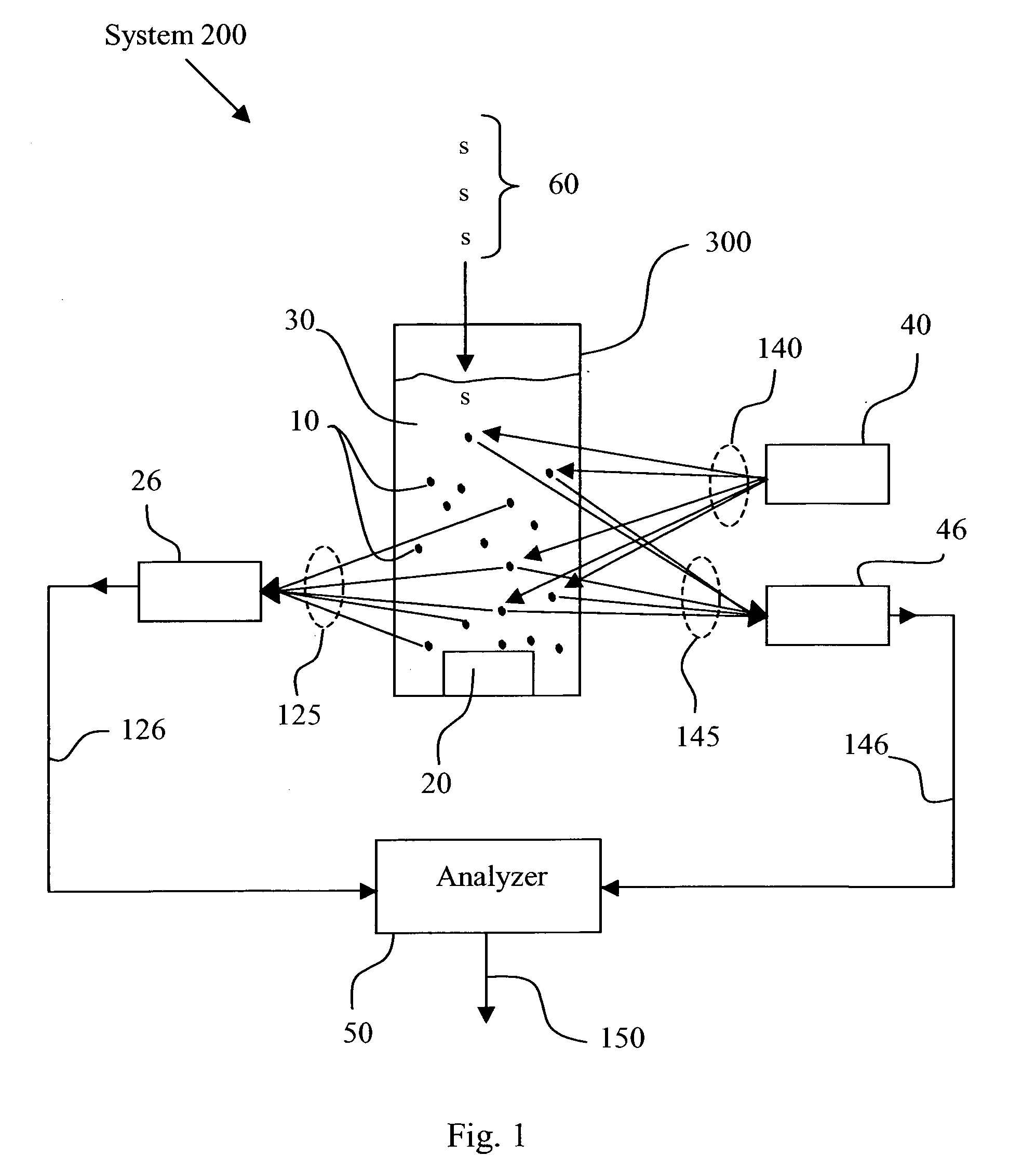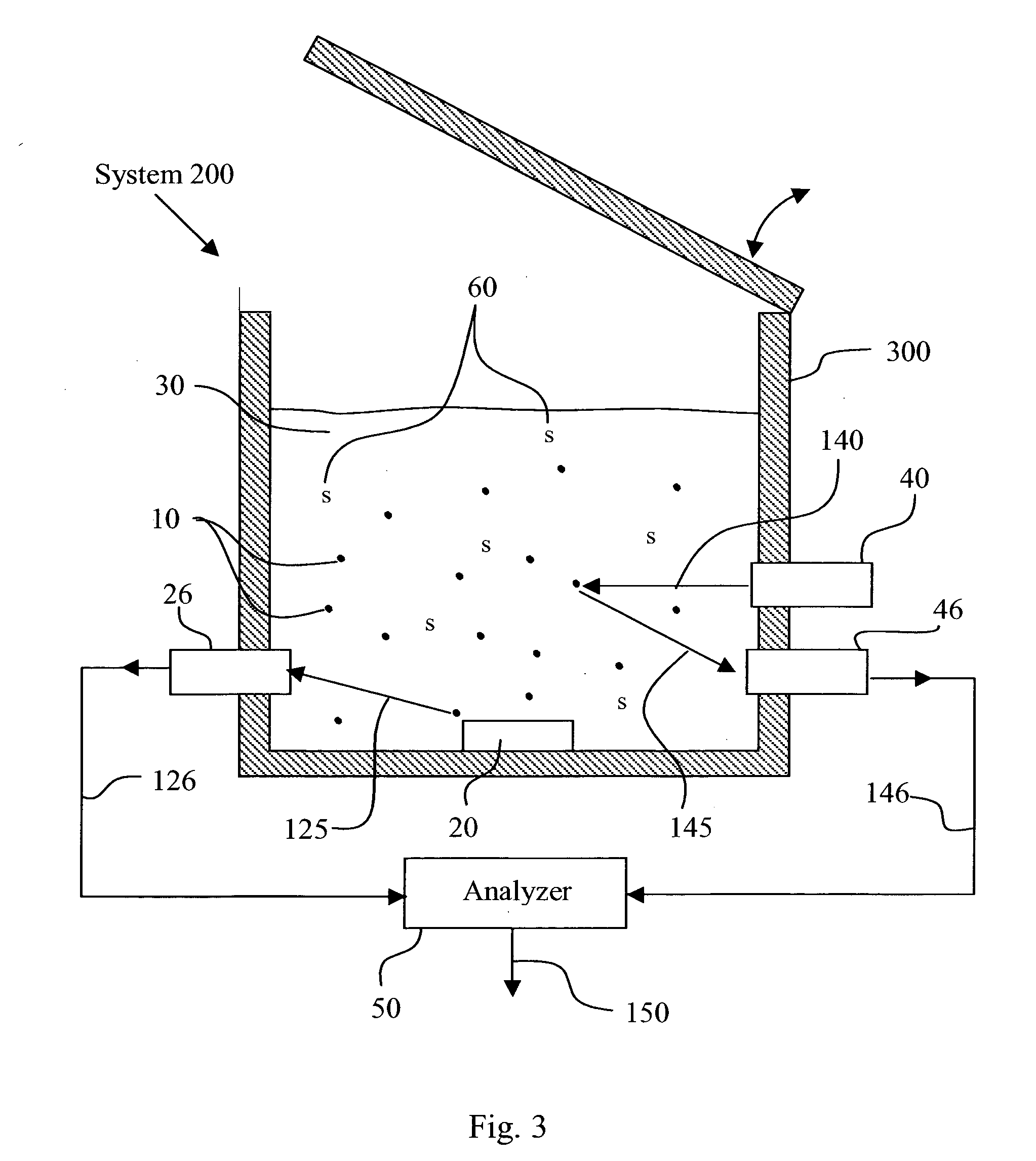System and method for quantifying toxicity in water, soil, and sediments
a technology for quantifying toxicity and water, applied in the field of can solve the problems of complex, time-consuming, and expensive current systems for quantifying toxicity in water, soil and sedimen
- Summary
- Abstract
- Description
- Claims
- Application Information
AI Technical Summary
Benefits of technology
Problems solved by technology
Method used
Image
Examples
Embodiment Construction
[0014]Toxicity test system 200, as shown in FIG. 1, accurately quantifies the toxicity of a test sample 60 by: combining the test sample 60 with an aqueous suspension 30 of dinoflagellates 10; testing both the chlorophyll-a fluorescence and the bioluminescence capabilities of the dinoflagellates 10; and then comparing the bioluminescence and fluorescence test results with control test results. The presence of toxins inhibits the ability of the dinoflagellates 10 to fluoresce and bioluminesce. Thus, exposing some dinoflagellates 10 to test sample 60 and then determining the degree of fluorescence and bioluminescence inhibition in the exposed dinoflagellates 10 provides accurate information as to the health of the dinoflagellates 10, and by extension, the toxicity of the test sample 60. The degree of fluorescence and bioluminescence inhibition in the dinoflagellates 10 due to exposure to the test sample 60 may be determined by comparing the fluorescence and bioluminescence test data o...
PUM
| Property | Measurement | Unit |
|---|---|---|
| wavelength | aaaaa | aaaaa |
| wavelength | aaaaa | aaaaa |
| wavelength | aaaaa | aaaaa |
Abstract
Description
Claims
Application Information
 Login to View More
Login to View More - R&D
- Intellectual Property
- Life Sciences
- Materials
- Tech Scout
- Unparalleled Data Quality
- Higher Quality Content
- 60% Fewer Hallucinations
Browse by: Latest US Patents, China's latest patents, Technical Efficacy Thesaurus, Application Domain, Technology Topic, Popular Technical Reports.
© 2025 PatSnap. All rights reserved.Legal|Privacy policy|Modern Slavery Act Transparency Statement|Sitemap|About US| Contact US: help@patsnap.com



